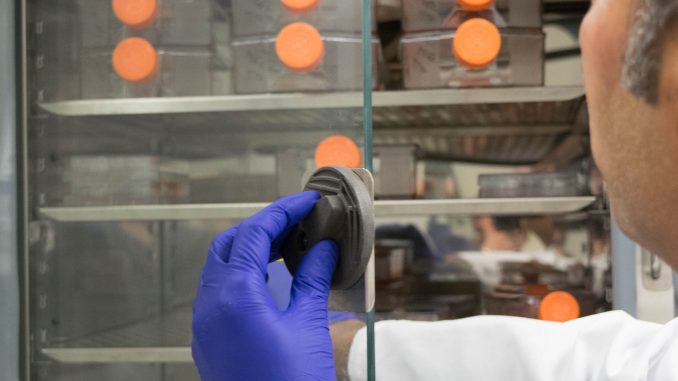
Temple University Hospital received an $11.6 million grant from the National Institutes of Health to research ways to repair hearts using stem cells.
Dr. Raj Kishore, the study’s principal investigator and the director of the Stem Cell Therapy Program at Temple’s Center for Translational Medicine, and Dr. Steven Houser, senior associate dean of research at the Lewis Katz School of Medicine. They are developing an approach to decrease heart disease using exosomes — small packages that transfer “important information” between cells — pulled from a person’s stem cells, Kishore said.
Heart disease is the No. 1 cause of death in the United States, killing more people each year than cancer, according to the Centers for Disease Control and Prevention.
If a heart attack is not treated quickly, the heart’s affected muscles die and turn to scar tissue, causing the organ to stiffen and pump less blood throughout the body. This can then cause heart failure. Kishore said his team aims to find a way to repair the heart after heart complications to keep a patient from dying.
Extracting exosomes from stem cells is essential because the exosomes can be implanted into the affected heart muscles without being wiped away like stem cells would. The exosomes still carry information from the stem cells, like proteins, Kishore said.
Watch a video about the researchSince heart muscle cannot regenerate on its own, the researchers will use exosomes from stem cells, which can be refigured into a new kind of cell, in order to regenerate the dead heart muscles.
Kishore said the stem cells that will be used in their research will not come from embryos, which has been highly debated in the medical field. Instead, the stem cells will come from the patient’s own body. The cells come from two locations — the heart and bone marrow.
Kishore and his team start their process by locating and removing stem cells, growing the cells in large numbers and then putting the cells into the heart. Because stem cells come from the patient’s own body, they will not be rejected.
Kishore’s team is testing if stem cells will make new muscles and ultimately combat heart failure when cells are retouched and placed into a patient’s failing body.
Although the team is looking at stem cells to repair hearts, the cells do not make the heart completely healthy. Stem cell additions only prolong the lives of people with heart disease, but unfortunately do not cure them.
“All the good things go away in one year,” Kishore added.
Kishore’s stem cell research has not yet reached human patients. The team is beginning with studying cell culture on pigs but hopes to begin clinical trials within two years, Kishore said.
“Maybe one day we can translate [the team’s] finding into a real-time patient and help them survive longer,” Kishore said. “We are working very hard to cure heart disease. We are not there yet, but everything is not lost, so be optimistic.”
Abbie Lee contributed reporting.


Be the first to comment